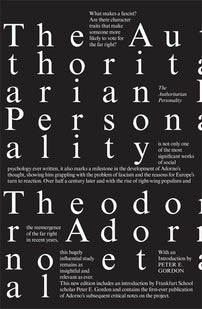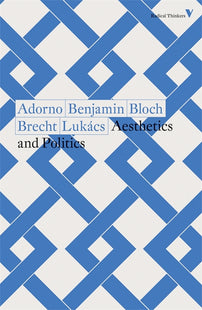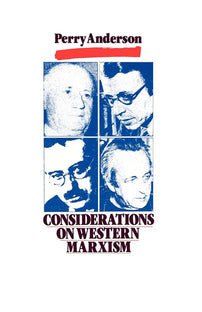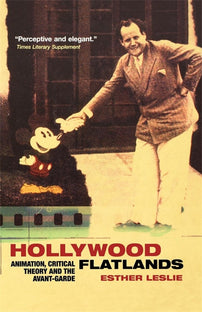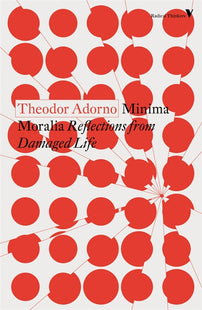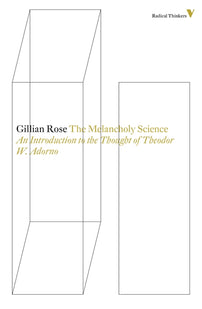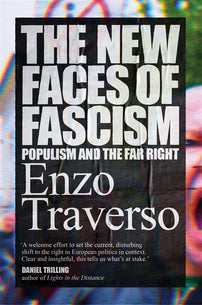Seductive Fascist Style
Theodor Adorno remains one of the key sources for understanding the desire for Fascism, notably in his groundbreaking work The Authoritarian Personality. In this article Max L. Feldman reads Adorno's writings on Fascism, alongside Disney's 1991 film The Beauty and the Beast, to analyse the contemporary resurgence of the far-right and the enduring relevance of Adorno's work.

‘The logical result of fascism,’ wrote Walter Benjamin, ‘is the introduction of aesthetics into political life.’[1] Fascism is, in part, militarised fun. Supporters dress up in combat-style uniforms; they march in parades with blaring trumpet music, longing for the purgative force of war.
Benjamin was trying to describe 1930s fascism, but explains part of the tone of our own era’s authoritarian populism, too. Rallies held by Trump, Duterte, Bolsonaro, Salvini, and others are textbook cases. They are all media events, with the leader encouraging the crowd to chant about the outrages of a dastardly common enemy.
Benjamin’s analysis can certainly help us to explain the August 2017 ‘Unite the Right’ rally, when thousands of neo-Nazis from across the United States marched through the university campus in Charlottesville, Virginia. Dressed in uniforms of white polo shirts and beige chinos and carrying tiki torches, an obvious reference to Nazi rallies, they chanted “You will not replace us!” and “Jews will not replace us!”
Following this, the curators of the 2018 Athens Biennale tried to satirise the aesthetics of the so called ‘alt-right’. As writer Dorian Batycka puts it, however, the Biennale ‘predominantly platforms artists whose work epitomises the vapid, empty lies of post-internet narcissists.’
To explore the roots of this vapid narcissism we could, of course, look at a fairly explicit example, such as the German film The Wave. This film is about a classroom experiment designed to explain the appeal of authoritarian regimes to high school students (based on a real 1967 school experiment). Yet, perhaps by exploring it through the unexpected angle of Disney’s animated musical Beauty and the Beast shows us something new. In particular, it shows us how fascism moves into the emotional vacuum left by capitalist society–all to the sound of a rousing song.
[book-strip index="1" style="buy"]Based on Jean-Marie Leprince de Beaumont’s fairy tale of 1756 and Jean Cocteau’s 1946 film, the love triangle at the heart of Beauty and the Beast is far more dramatically sophisticated than anything Disney has done before or since. Eponymous beauty Belle is a liberated bookworm with dreams of escaping dull village life and the mockery of its philistine townsfolk. Handsome but narcissistic hunter Gaston, the village’s beloved eligible bachelor, wants to marry Belle and seethes with rage when refused.
The Beast, however, was not always so beastly. Once a prince with everything his heart desired, The Beast was transformed into his monstrous form by an enchantress as punishment for his selfishness. His castle, clearly based on 19th century Romanesque Revival palace Schloss Neuschwanstein in Bavaria, is turned into a gloomy gothic fortress; his servants, living, talking household items. The Beast can still be redeemed, but he must prove himself worthy. The enchantress tells him that, unless he learns to love another and earns their love in return, he will lose his humanity forever.
Belle becomes the Beast’s prisoner in exchange for her absent-minded inventor father, Maurice who accidentally stumbles on the monster’s castle. After quarrelling, and an escape attempt, Belle and the Beast fall in love. Maurice does not know this and frantically describes the Beast to the derision of Gaston and the villagers. They refuse to believe the monster exists and sing, praising Gaston’s virulent masculinity, unjust behaviour, and capacity for violence. Gaston plots to have Maurice committed to an asylum if Belle again refuses to marry him and leads an angry mob to Belle’s door to imprison her father. Then, the film’s dramatic crux.
Belle proves the Beast is real using a magic mirror. She refuses to marry Gaston (“he’s not the monster,” she cries, “you are”) and he rallies the villagers in song to destroy the creature. In doing so, they demonstrate the masochism of those seduced by fascist style. This is the root cause of their vapid narcissism. “Kill the Beast!” the villagers chant, eager for cruelty.
Benjamin may have explained how fascism looks and feels. But it was Theodor W. Adorno, in his essay ‘Freudian Theory and the Pattern of Fascist Propaganda’[2] and contributions to The Authoritarian Personality, that explained the desire for fascism. Fascism is, he says, a ‘device for effortless “orientation” in a cold, alienated, and largely ununderstandable world.’[3]
The Authoritarian Personality is now-classic account of fascistic and antisemitic tendencies. It asks what people susceptible to fascism are like, how their inner lives are organised, what contributes to anti-democratic attitudes, which personality traits point to far-right tendencies, and which social facts contribute to these developments.[4] As Max Horkheimer says in his preface, the book’s central theme is a new anthropological species: ‘the authoritarian type of man’. ‘In contrast to the bigot of the older style,’ Horkheimer says,
he seems to combine the ideas and skills which are typical of a highly industrialised society with irrational or anti-rational beliefs. He is at the same time enlightened and superstitious, proud to be an individualist and in constant fear of not being like all the others, jealous of his independence and inclined to submit blindly to power and authority.[5]
This is timely, since some of these tendencies have shown up in otherwise mature, stable liberal democracies. We share the central problem of the study: the existence of a ‘potentially fascistic individual’ who would ‘readily accept fascism if it should become a strong or respectable social movement.’ The conditions for this ‘readiness for response’ would, the authors argue, be the ‘increase in pitch and volume’ of fascist propaganda such that it dominates the news media with little to no opposition. This would allow people to air their secret thoughts, uncritically accepting the word of authority figures who can now speak on their behalf.[6]
Beauty and the Beast dramatises these conditions, giving us just a taste of seductive fascist style in the comfort of our own homes. The film is, in this sense, a complex object. Reading it like this gratifies nostalgic, even regressive, desires among those of us who were children when it was made. I have commented on this before, and I am not alone in doing so. Some readers will, indeed, know the film well enough to permit instant recall. This nostalgia may even reflect or invert the feelings of people who support new populist or neo-fascist governments. Perhaps the nostalgic kick we get from reading the film this way serves the same ‘primitive emotional needs’ as those movements. Both, at the very least, aim to ‘maintain harmony and integration within the self’.[7]
Beauty and the Beast also shows us how fascism doesn’t necessarily come at us ‘straight’ in boots and braces or Hugo Boss-designed uniforms. It comes, rather, with a jolly smiling face: a suited politician who could just as easily be any old charming fellow in a pub.
At the same time, however, we must not fall into the trap of mechanically ‘applying’ critical theory to a piece of popular culture like a hammer cracking open a nut to reveal its juicy secrets. These expectations are thrown at diverse figures who do this kind of thing, from Slavoj Žižek and Mark Fisher to Jordan B. Peterson and the 125 titles (and counting) of Open Court Publishing’s ‘Popular Culture and Philosophy’ book series. With the exception of Fisher, the results are rarely satisfying.
But we should not simply limit ourselves to pointing out Walt Disney’s own dalliances with Nazism, fascist behaviour, or meetings with Leni Riefenstahl in the late 1930s. We should, rather, look to how Adorno’s take on the emotional lives of potential fascists and ‘The Mob Song’ from Beauty and the Beast can mutually reflect parts of each other without fitting snugly together. This allows us to reflect on the scary fact that fascism can lurk in some fetid corner of the unconscious, needing only the right kind of encouragement to come out.
Adorno’s essay on fascist propaganda follows Sigmund Freud’s study ‘Group Psychology and the Analysis of the Ego’. Freud defined a ‘group’ as ‘a number of individuals who have put one and the same object for their ego and have consequently identified themselves with one another in their ego.’[8] Group-identity, for Freud, is a specific relation between individual and collective. The group identifies with one individual (the ‘leader’) who represents all the qualities individual members most wish they had but do not (an ‘ego-ideal’).
In the case of Beauty and the Beast, the individual villagers feel at one with each other and Gaston, the leader, by emulating him. They uncritically accept his lies when he claims the Beast poses a threat. “The Beast will make off with your children,” he booms in the opening line of the scene. The viewer already knows the Beast is not only kind and gentle, but capable and deserving of love. “He’ll come after them in the night,” Gaston continues. “We’re not safe ‘til his head is mounted on my wall. I say we kill the Beast!” The question we need to ask, for which Adorno provides one answer, is what inner motivations Gaston is preying on to make this scene possible.
Adorno saw a connection between Freudian group psychology and fascism, which preys on egos weakened by capitalist society. For him, modern social relationships are formed by what he calls ‘administered capitalism’. This is when human lives are relentlessly rationalised along the lines of industrial production so our thoughts are pre-formed, and our feelings shaped in advance, as if they were mere products on a factory conveyer belt. It is precisely this that Adorno thinks prepares people for totalitarian dictatorships, and it does so by producing narcissists.
Administered capitalism makes two demands on us: competitiveness and conformity. We must climb the greasy pole, shirking others with sharp elbows and looking on with hard hearts as they fall. Because we can always be fired from our jobs and exchanged with somebody else, as if our very personalities mean nothing, we feel disposable, worthless, losing our sense of wholeness. We could be next. We survive only by following fixed behaviour patterns. This, however, makes us easily manipulated and capable of irrational outbursts of violence.
Though the film is a product of its time and place and will, at least in part, reflect elements of the society in which it was produced, the psyche of the potential fascist is, Adorno says, ‘not so much dependent upon the nature of its object, as upon the subject’s own psychological wants and fears.’[9] The choice of object to hate is partly independent of its object. It has a non-specific, accidental quality. This is why Gaston’s opening line preys on the twin fears, since the presumed brutality of the beast merely reflects that of modern social arrangements themselves. No more so than when public life is dominated by boastful demagogues like him. The group-structures that develop around these figures reflect the void produced by modern industrial society. The question Adorno wants to ask is how they succeed in shaping the will of the group.
Group membership lets us project what seems to prevent us from forming a unified identity to archaic fantasy-figures like Gaston. They compensate for what we lack, and we identify with them because they promise to protect us. Hence Gaston’s promise to slay the beast and parade his severed head in public, a grim trophy marking his authority.
Traditional father-figures cannot play this protective role, however, because the social demands that weaken the ego erode parental authority too. Max Horkheimer discusses this in his, admittedly idealised, account of changes to family structures as the laissez faire liberalism of the 19th century turns into 20th century administered capitalism.[10]
The loving bourgeois family, Horkheimer explains, once offered a refuge from competitive market society. Independent fathers headed family businesses. They showed their children how to become people of good character and inherit the enterprise. Under administered capitalism, however, the father is a mere employee of a large firm. The constant demoralizing threat of unemployment weakens his social prestige, and all he can teach is conformity to the impersonal demands of a bureaucracy. To survive in this harsh world, we must learn how to strategically calculate our position in it. There is no need for more sober kinds of autonomous moral thinking. Authority figures have not disappeared in administered capitalism, however, because the weakening of stable forms of Oedipal identification leads, Horkheimer says, to ‘submission in utter hopelessness to every master.’[11]
Fascist demagogues fill the empty space left when parental authority goes. The only father we see in Beauty and the Beast is airheaded Maurice, and we mostly see him being mocked or threatened or humiliated by the villagers. Once parents have left the scene, fascists step in by, Adorno argues, ‘artificially creating the bond Freud is looking for.’[12] We idealise these figures and we identify with them. This dual process satisfies our repressed desire for what we are not or cannot be. ‘By making the leader his ideal,’ Adorno writes, ‘he loves himself, as it were, but gets rid of the stains of frustration and discontent which mar his picture of his own empirical self.’[13]
These leaders appear as an exaggerated version of ourselves, ‘appearing as a superman’ to replace something we have failed to achieve, but at the same time ‘work the miracle of appearing as an average person.’[14] The leader makes us feel loveable by loving an idealised version of ourselves, ‘a person who suggests both omnipotence and the idea that he is just one of the folks […] untainted by material or spiritual wealth.’[15] Though, as Gaston sings earlier in the film, “I use antlers in all of my decorating,” he is not shown to be more prosperous than any of the other townsfolk.
Adorno’s example is, obviously, Hitler, who ‘posed as a composite of King Kong and a suburban barber.’[16] Likewise, Gaston exudes the cruel spirit of moralising village life and he is a hunk with exaggerated, rippling muscles. Not only is he the loudest voice in the tavern, but the first to organise the collective identity of the villagers around the humiliation of others. Anybody who refuses risks exclusion themselves. After all, the group desires, as Freud says, to be ‘ruled and oppressed and to fear its masters.’[17] In doing so, they reproduce the same hierarchies that already exist in the society they are rebelling against. The bonds between them are, however, defined only by what they hate. In our story, they hate the Beast.
Gaston knows what his followers need. He already knows what they want to hear because he is like them enough for them to identify with him. The difference is that he is able to express these latent desires to ‘create the atmosphere of the pogrom.’[18]
The object of hatred is necessary because Gaston, like all demagogues, has no real special qualities and the bond between the villagers has no content, no meaning, other than their ability to love themselves. This is why they have to find a justification for who is included in the group and who is rejected. Once the Beast is made the object of hatred, the crushing burden of social guilt is temporarily lifted.
The result is a sense of collective jubilation as the separation between ego (what we know we are) and ego-ideal (what we would most like to be) dissolves. They sing. They light torches. They march to the Beast’s castle. This produces a narcissistic gain in the group, reflected in their conformity. Earlier, the villagers sang triumphantly of Gaston’s beauty and arrogance. Now they merely repeat what Gaston has already said.
Today, social conditions have produced uncritical acceptance of authority among large parts of the population. Among others, even those one might expect to criticise the status quo, we see only despair. The upsurge in interest in deterministic utopian or pessimistic thinking, influenced by the rapid technological change speaks volumes about the powerlessness felt even by those least susceptible to fascist propaganda. Trends towards esoterica and astrology, however ironic, play a similar role.
Yet, it is ultimately ironic that a Disney film, in which artistic aims come second to selling merchandise, should have so much to tell us about political dangers of the present. Beauty and the Beast is, in fact, precisely the sort of mass culture that Adorno thinks robs us of autonomy. It does so by making us accept pre-packaged ideas, just as members of fascist groups outsource their own unconscious to their leaders. This is reinforced through repetition of the kind Adorno already saw in pop songs and advertising slogans. We are the villagers and the villagers are us, and we see these commands everywhere. Because you’re worth it. Be my baby. Like a virgin. i’m lovin’ it. Impossible is nothing. Quality never goes out of style. Just Do It. Make America Great Again. The Will of the People. Mut zur Warheit. Prima gli Italiani. Build the Wall. Kill the Beast.
Max L. Feldman is a writer, editor, and educator based in Vienna.
[book-strip index="2" style="display"][1] Walter Benjamin, ‘The Work of Art in the Age of its Mechanical Reproducibility’ (1935), in Illuminations, trans. by Harry Zohn (London: Pimlico, 1999), p.234
[2] Theodor Adorno, ‘Freudian Theory and the Pattern of Fascist Propaganda’ (1951), in The Culture Industry: Selected Essays on Mass Culture, ed. by J.M. Bernstein (London: Routledge, 2001), pp.132-57
[3] Theodor W. Adorno, Else Frenkel-Brunswik, Daniel J. Levinson, R. Nevitt Sanford, The Authoritarian Personality (1950), (London: Verso, 2019), p.608
[4] Adorno et al., The Authoritarian Personality, p.2
[5] Max Horkheimer, ‘Preface’, in The Authoritarian Personality, x
[6] Adorno et al., The Authoritarian Personality, p.1ff
[7] ibid, p.5
[8] Sigmund Freud, ‘Group Psychology and the Analysis of the Ego’ (1921), in The Standard Edition of the Complete Psychological Works of Sigmund Freud: Volume XVIII, trans. by James Strachey, p.116
[9] Adorno, et al, The Authoritarian Personality, p.609
[10] Max Horkheimer, ‘Authority and the Family’ (1933), in Critical Theory (New York: Seabury Press, 1974), pp.47-128
[11] Horkheimer, ‘Authority and the Family’, p.125
[12] Adorno, ‘Freudian Theory and the Pattern of Fascist Propaganda’, p.135
[13] Adorno, p.140
[14] Ibid, p.141
[15] Ibid, p.142
[16] Ibid
[17] Freud, ‘Group Psychology and the Analysis of the Ego’, p.78-9
[18] Adorno, p.133

